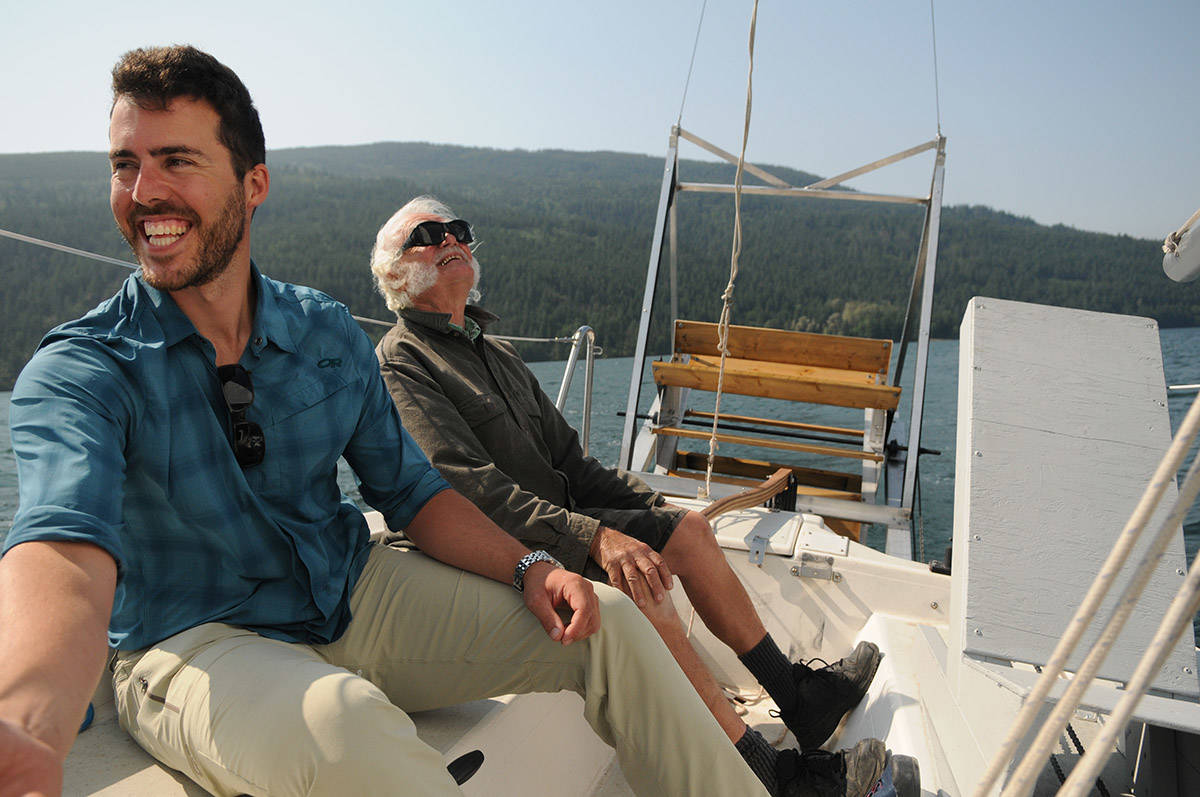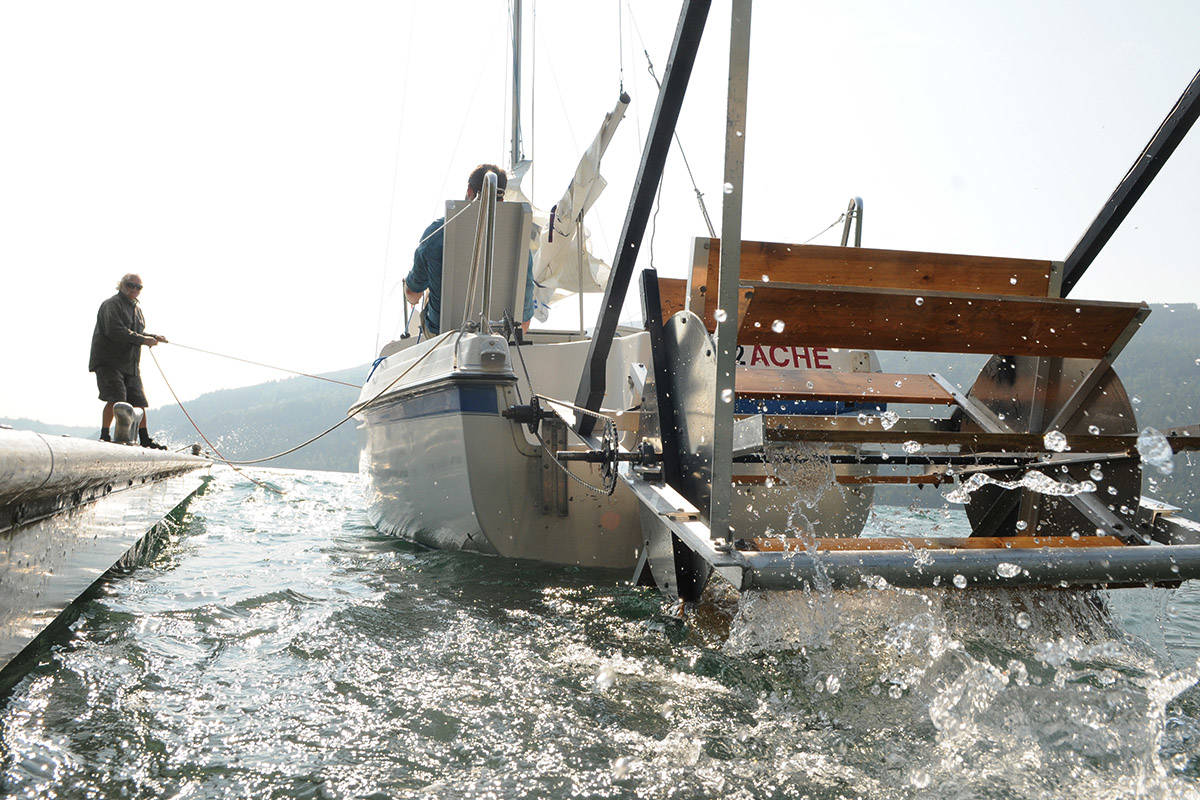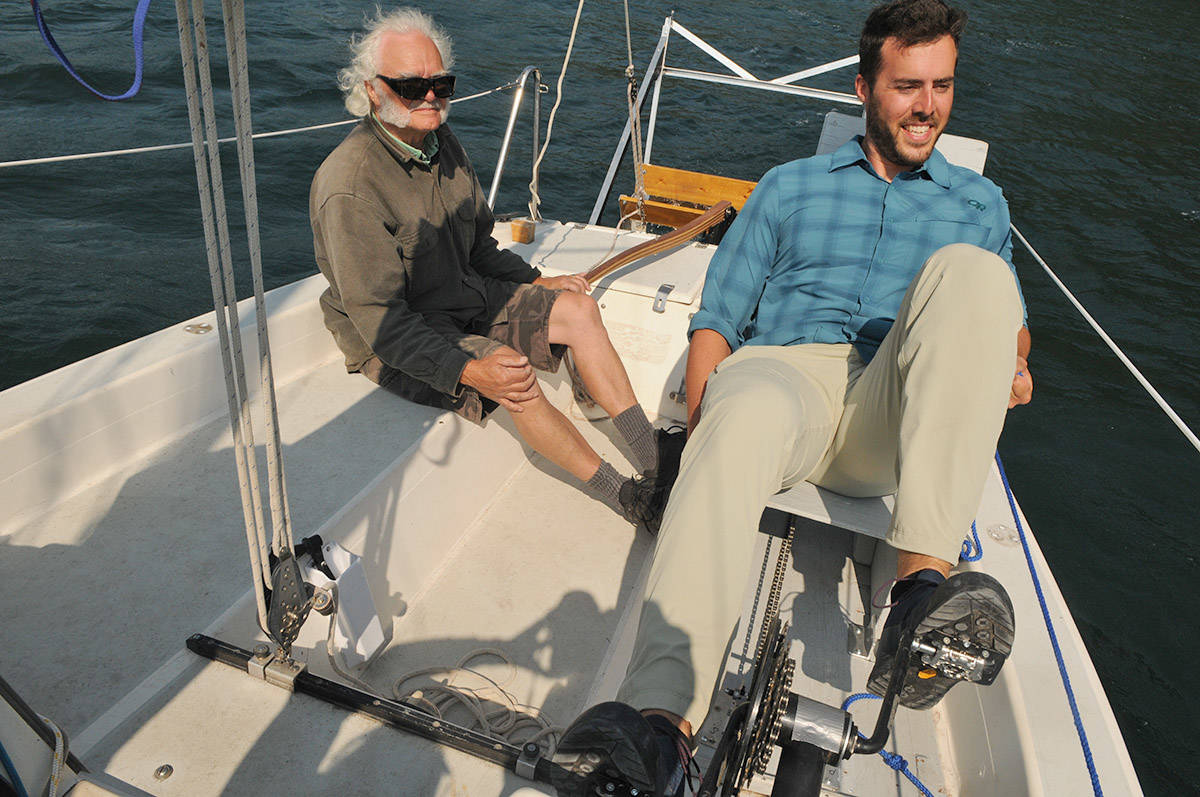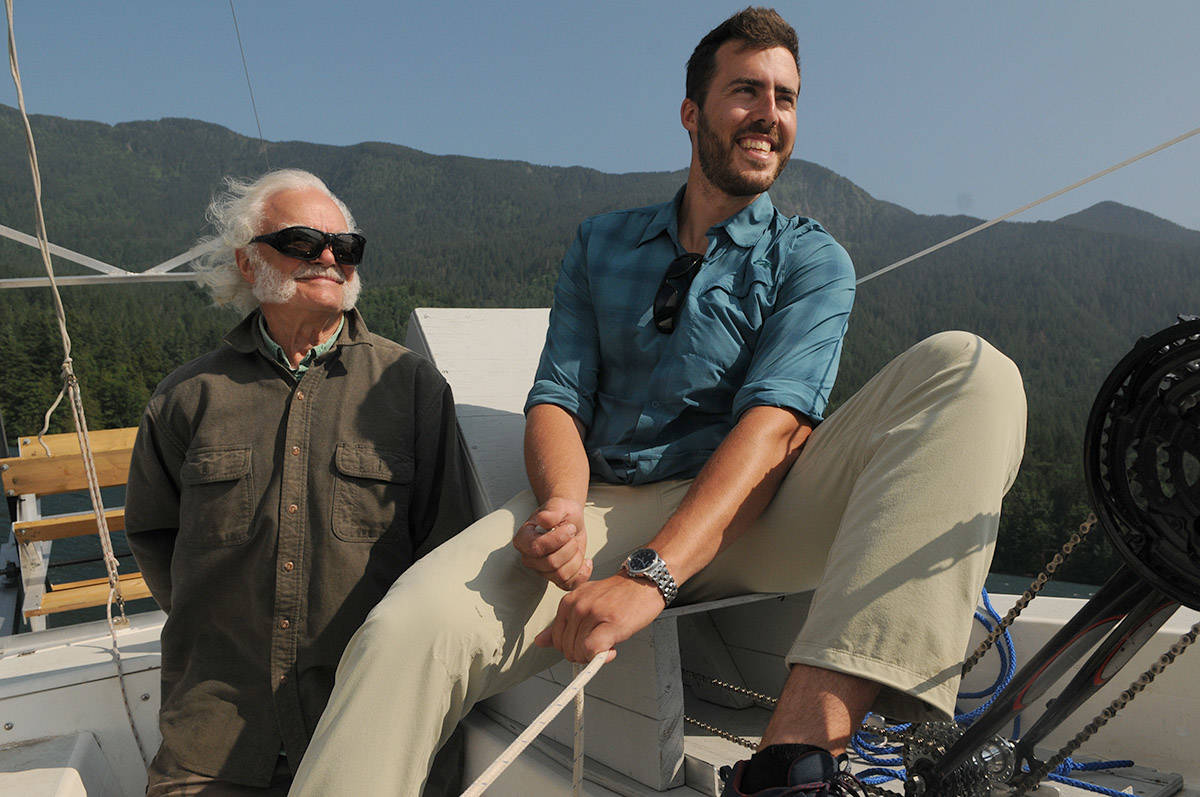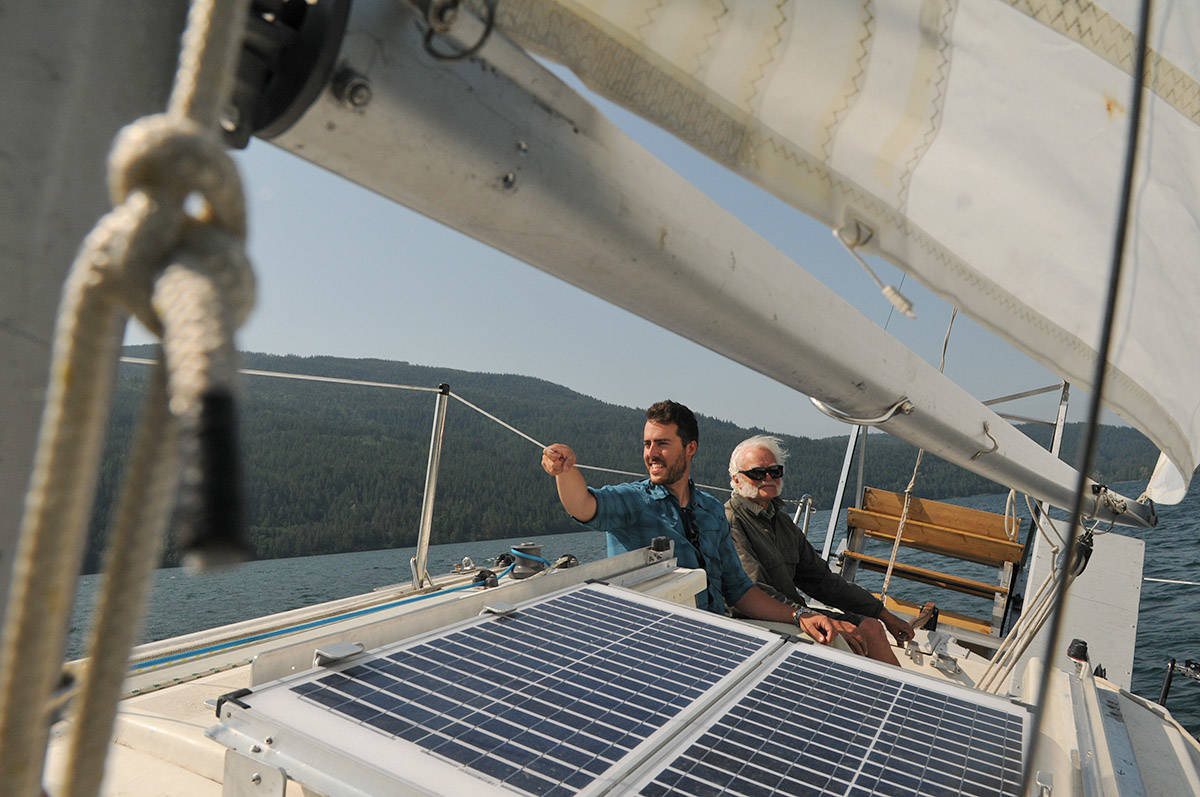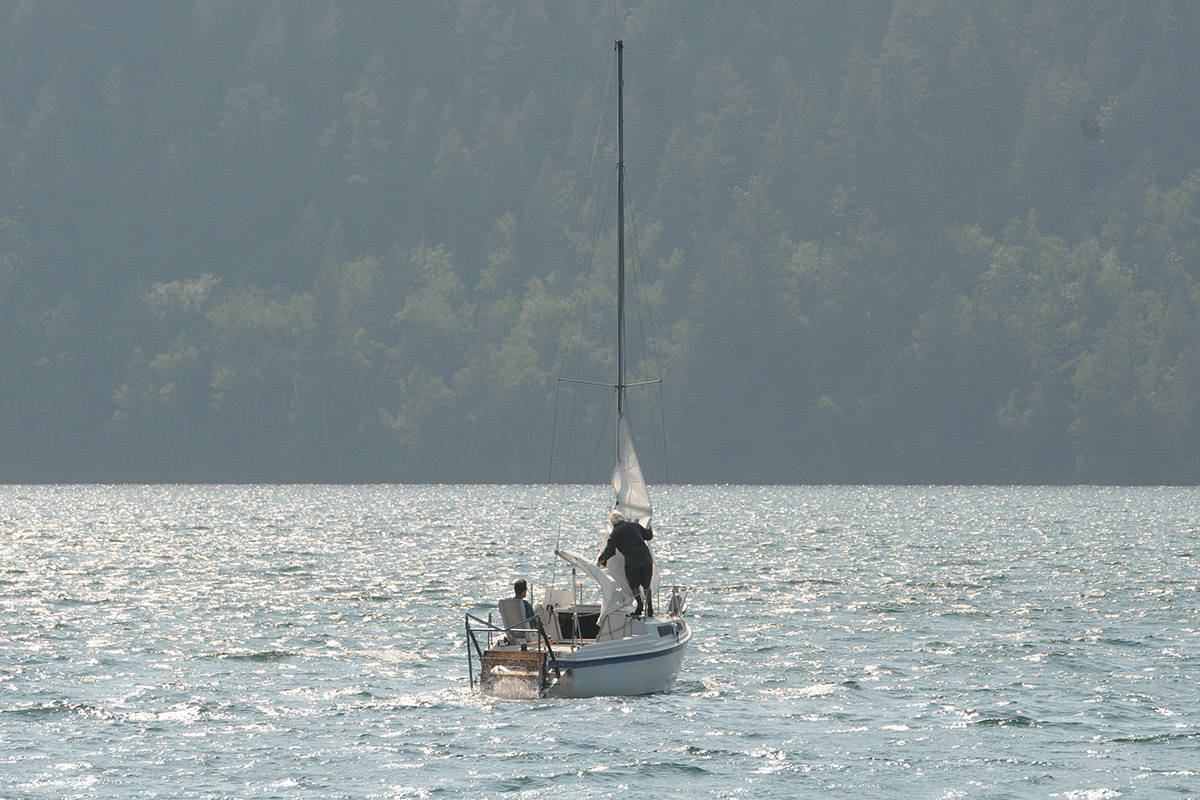A father-son team in a sailing race to Alaska has added a true Chilliwack element to their boat by installing a pedal-powered paddle wheel to the sailboat’s stern.
| (Jenna Hauck/ The Progress) |
“The record time is just under four days. We’ll be pretty happy if we’re done in three weeks,” says Lionel. “What wins you the race is how fast you are when you sail.”
The R2Ache is “moderately fast,” but when the wind dies down on the water, and when they need to get in and out of marinas, human power will be used.
“The paddle wheel is our answer to that and this is the first time anybody has ever tried building a human-powered paddle wheel,” says Lionel.
Others will be using paddles, or pedal-driven propellers.
The Jensens’ unique wheel, along with Randy’s decades of sailing experience and Lionel’s tenacity are hoping to prove advantageous for the Chilliwack team.
“Dad’s got all the sailing know-how from sailboat racing and I have the enthusiasm. Together we have a good risk tolerance. He keeps me in line.”
The Jensens bought the sailboat in January and since then they’ve been getting it ready for the race. With the help of their sponsor Hammer Welding, they built the paddle wheel and attached bike chains, gears and pedals with which to rotate the 100-pound wheel.
“I was actually pretty surprised at how well it does work,” says Randy.
Lionel sits in the wooden seat and explains how the wheel can be raised and lowered.
“It’s a pretty slick pulley system because going up or down one or two centimetres makes a big difference,” he says.
“It is very depth-sensitive,” adds Randy. “The smaller the wheel, the more sensitive it is to the depth. If it’s too deep, you’re wasting a lot of energy.”
They’ll be heading to the U.S. Friday, May 31 and R2AK starts on Monday. Stage 1 goes from Port Townsend to Victoria, and racers have 36 hours to complete that leg. Stage 2 starts in Victoria on June 6 and goes north all the way to Ketchikan, Alaska.
“There probably hasn’t been a paddle boat in Victoria for 100 years,” says Randy.
There will be one small delay for team R2Ache.
“We’ll start the race, go for two hours [to Victoria], park the boat, I’ll run to the airport and fly to Edmonton. The next morning I walk across the stage for my PhD graduation, and that evening I fly back to Victoria and get back on the boat,” says Lionel.
No big deal to the Jensens though, they figure they’re simply giving the other boats a bit of a head start.
Currently, about 45 teams are registered. Some of them are state-of-the-art catamarans and trimarans with sailors who’ve raced all over the world. But regardless of the competitiveness of others, it’s a fun race.
| (Jenna Hauck/ The Progress) |
Although the first-place prize is $10,000 USD, second place is a set of steak knives and “cathartic elation if you can simply complete the course,” as stated on the race website.
There’s a boat called the Grim Sweeper which leaves Victoria three weeks after the race starts. If it catches you, you’re out.
“For us, it’s the adventure. We’re not trying to win, we want to try and make it before that boat catches us,” says Lionel.
Most of the route will be fairly protected with the biggest obstacles being cruise ships and barges, but there are three areas where they’ll be in exposed open water: Cape Caution at the north end of Vancouver Island, the Juan de Fuca between Port Townsend and Victoria, and Dixon Entrance north of Price Rupert.
On board the R2Ache, they’ll be packing food, water, GPS devices, paper nautical charts, a VHF radio, coast guard-required safety equipment, and various sails. There are even solar panels on the boat to power their lights.
Lionel still remembers the first time he felt a boat move under sail power.
“There’s no engine, there’s no racket and you feel the wind fill the sail and the boat just starts moving. That’s such a neat feeling,” he says. “Before, I couldn’t understand how it could be exciting to be doing seven knots — that’s maybe 12 kilometres an hour — but once you feel it, you get it. It’s peaceful, it’s quiet.”
Anyone wanting to follow Randy and Lionel Jensen aboard R2Ache can go online to r2ak.com and watch the live race tracker which begins on June 3. You can also find their bio on the race website.
@PhotoJennalism
jenna.hauck@theprogress.com
Like us on Facebook and follow us on Twitter.
